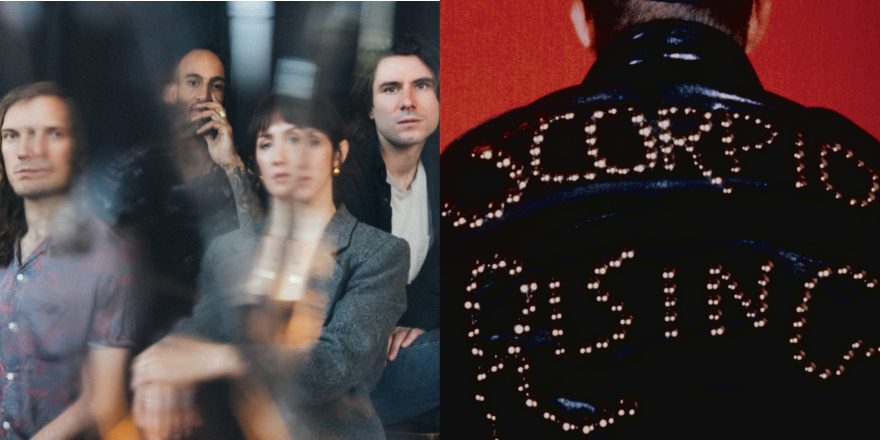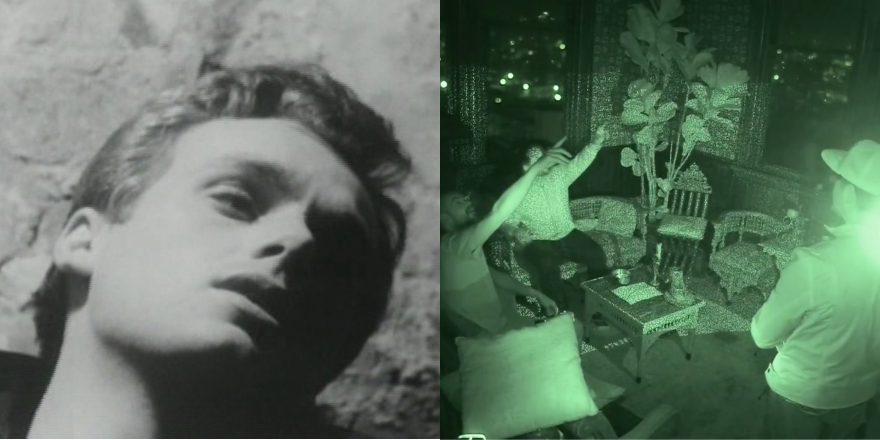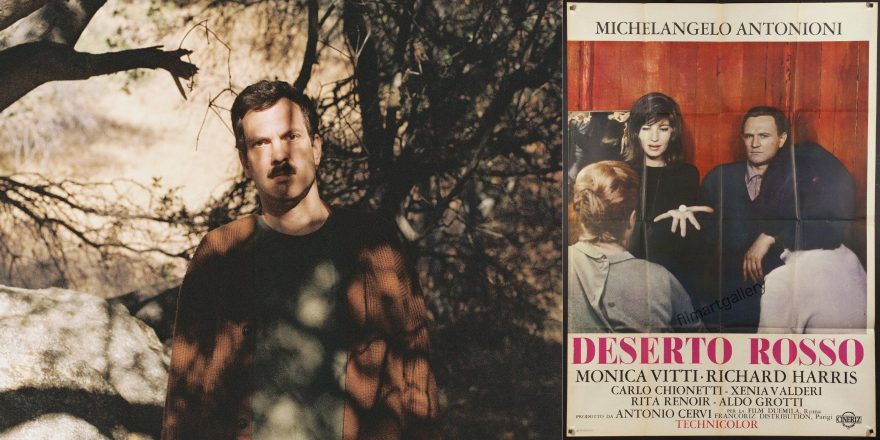I remember discovering Kenneth Anger’s work in college, and I was immediately obsessed. I would often have one of his films on in the background and play guitar over it for inspiration — the beautiful saturated colors, bold imagery, and intense subject matter were otherworldly. It was like I was Tom Cruise in Eyes Wide Shut, discovering some secret society.
I was particularly obsessed with Puce Moment, with that lo-fi acid-folk masterpiece score by Jonathan Halper. I would watch it almost daily: the lush, beautiful colors, the mysterious woman living a celebrity lifestyle, basking in the glory of all the riches she has acquired. When she flips through a sumptuous collection of dresses, stopping only when she finds the perfect one for the occasion, it is as meditative and entrancing as watching a river flow at golden hour. There is also something very unsettling about the film. Something in the way the woman moves feels so surreal and off. The warm flickering glow of the film from 1949 is so beautiful and rich, but there is a kind of sadness and loneliness too. The film has a dream-like quality, and even alludes to it when the woman falls asleep on the couch.
The psychedelic lo-fi soundtrack adds a sense of eerie isolation, with the songs “Leaving My Old Life Behind” and “I Am a Hermit.” It sounds like some ragged scary guy living in total isolation in the woods slowly losing his mind. It was the exact music I was trying to make, but so much better with that incredible bass line and a beautifully hypnotizing backwards guitar lead. It still strikes me as one of the best music videos ever made, and something that I return to again and again as a deep well of inspiration. It has all of the elements that I strive for: melancholia and pop hooks that still maintain a calm meditativeness, like a landscape painting or something from a dream.
Another of Anger’s films that I watched over and over was Inauguration of the Pleasure Dome. Its dark, satanic surrealism became a visual backdrop for me as I sat in my room playing guitar or synth, and later inspired some of my own early music video-making efforts. I loved the intense red and blue lights so much that I immediately went out and bought a bunch of colored lights, using them in the video for the band I was in at the time called Drawing Guts. Today, Constant Smiles uses one of the stills from that video featuring my friend Nina as the image and symbol of our band. For some reason, I always heard a Vangelis-esque soundtrack in my head for Anger’s films, so I think when I started working on this record and busted out my synths, I just naturally started watching his films again.
Scorpio Rising, as with many of Anger’s other films, explores a number of fascinating themes: questioning masculinity, being wary of false idols — whether they’re James Dean, Marlon Brando, Jesus, or Hitler — and the idea of living fast and dying young. Rituals also figure in — rituals for making yourself beautiful, picking out your clothing, taking care of your motorcycle. This kind of imagery made me reflect on all the rituals I practice in my life, many of which keep me grounded so that I don’t crash and burn (like the cautionary lesson at the end of the film). Daily meditation, support groups, friends, family, and art. I need to have those structures in place so that I am there for others and have a sustainable life. I originally wanted to use a still from Scorpio Rising for the cover of our latest album, but we couldn’t figure out how to get the rights to use the image. My girlfriend (who is a genius) suggested recreating it, using myself instead, photographed by the amazing Ebru Yildiz.
Kenneth Anger and John Waters’s films opened my mind to the notion of “letting my freak flag fly,” and what it means to be an artist — not being scared or ashamed of who you are and where that takes you. As someone who has always wanted to hide and not reveal too much about myself, it was freeing. For them, it was dangerous territory to be so bold and out there. It took bravery to be openly gay in 1947 and make a film like Fireworks — which was banned, as were Waters’ films Pink Flamingos and Female Trouble.
As revolutionary as these works were at the time, they also seemed very accessible for an aspiring musician and video-maker such as I was. There was that sense of DIY that made it feel within my reach, giving me something to strive for and models that were truly inspiring. You could appreciate the handmade love that went into their films. In both directors’ work, there was a sense of community where you felt they had a family of friends and artists who came together to make something special, mysterious, magical. It’s a reminder of how important my own community of friends and collaborators have been to me in all my work, and in making this latest album, Kenneth Anger. They form the support and encouragement for my ongoing search for stability and peace through making art.







